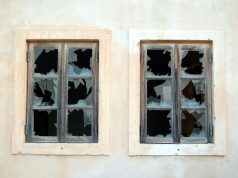Radon poses a serious risk hazard for many companies and their employees. In the UK, it has become so fatal that it is reported to be the second largest cause of lung cancer, taking the lives of more than 1,000 citizens on an annual basis.
In some areas of the UK, the radon potential is more than 30%. Areas in places like Penzance, Dartmoor National Park, Bath, Banbury, and Derbyshire Dales are mostly prone to infection. Other areas in Plymouth, Leeds, Sheffield, and Swansea have a maximum radon potential of between 10%-30%.
Because so many areas in the UK has potential of being affected by radon, the government and Public Health Department of England (PHE) have put together specific rules and regulations to keep workers and homeowners safe.
It’s important that you are aware of the dangers caused by radon in your home and in your workplace. For more information, watch this video by the Public Health Department of England.
How is Radon Measured?
This hazardous radioactive gas is measured in units of Bq/m3 or becquerels per cubic meter. This measurement basically tests the radioactive concentration in the air of a premises. On average, an indoor building or area will have a measurement of 20 Bq/m3.
Because this gas is colorless and odorless, it typically goes unnoticed by workers and inhabitants of a property. Not being able to smell or see it, causes great concern. Inhaling this gas can cause fatal medical conditions. To ensure that homes and workplaces are safe, employers and homeowners should hire a ground gas solution company to do a thorough testing.
Whenever an indoor or underground area measures below 300 Bq/m3, it poses no serious cause of concern. In this case, employers can only take precaution measures to ensure that the hazardous gas doesn’t escape from the soil or ground.
What Happens When my Premise is at Risk?
If radon levels measure above 300 Bq/m3, the IRR17 regulation comes into play. IRR17 is the Ionising Radiations Regulation 2017 that requires business owners to take immediate action once the radon level has reached above the defined level of 300 Bq/m3.
A ground gas solutions company is contacted to advice and help employers to restrict any further exposure to the radioactive gas. In this case, employers can’t ignore the measurements and if not followed, the local authorities as well as the HSE will enforce rules and regulations.
For a more in-depth article on the rules and regulations of treating contaminated areas, read this by the NHBC UK: http://www.nhbc.co.uk/NHBCPublications/LiteratureLibrary/Technical/TechnicalExtra/filedownload,47756,en.pdf

Control and Risk Assessment
For any employer, radon control and risk assessment will be a foreign industry. That is why authorities will encourage employers whose employees are at risk to contact professional and licensed radon controllers and remediation contractors.
These professionals have to strictly follow protocol to ensure their own employees aren’t exposed and that they get the problem under control as soon as possible.
In most cases, radon enters a building through the ground beneath. Depending on the severity of the problem, different controlling measures will be applied by solution companies. The solution to the problem is also dependent on the design of the building and how the gas might escape into the rooms of it.
When a new building is built, a special ‘radon proof’ barrier is installed beneath the flooring. This will prevent the gas from escaping out of the soil into the basement or floor level rooms. A ground gas solutions company will be able to assist developers in testing for radon potential areas and installing barriers.
Other measurements taken by control companies, will be to install a sump. It’s a small opening below the ground that features an electric pump that excretes air from in the ground to the outside. Basically, providing a kind of ventilation system that reduces the build up of radioactive gases in the ground.
All these measurements have been approved, licensed, and certified by the UK authorities.
In the UK, one of the worst cases of radon pollution was measured at 75,000 Bq/m3. To avoid levels getting this high, it’s important for all business owners to assess their buildings by hiring a certified surveyor. This will ensure the safety of all employees and prevent serious future illnesses.














